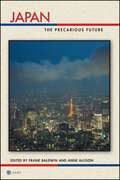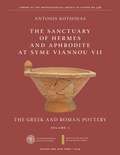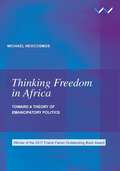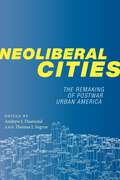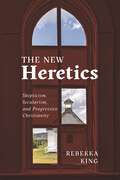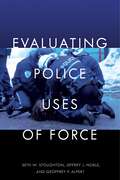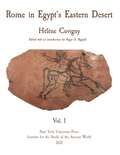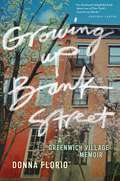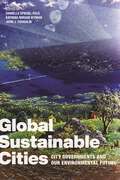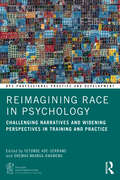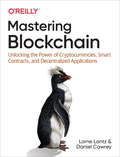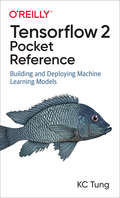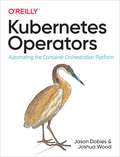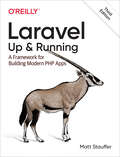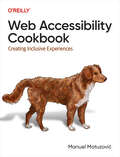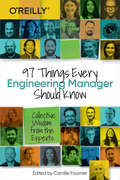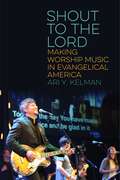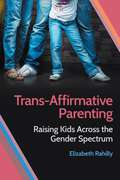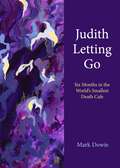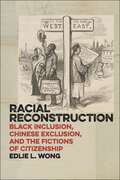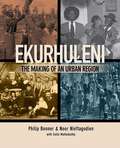- Table View
- List View
Japan: The Precarious Future (Possible Futures #1)
by Frank Baldwin Anne AllisonOn March 11, 2011, a 9.0 earthquake off Japan’s northeast coast triggered a tsunami that killed more than 20,000 people, displaced 600,000, and caused billions of dollars in damage as well as a nuclear meltdown of three reactors at the Fukushima Daiichi nuclear plant. Japan, the world’s third largest economy, was already grappling with recovery from both its own economic recession of the 1990s and the global recession following the US-driven financial crisis of 2008 when the disaster hit, changing its fortunes yet again. This small, populous Asian nation—once thought to be a contender for the role of the world’s number one power—now faces a world of uncertainty. Japan’s economy has shrunk, China has challenged its borders, and it faces perilous demographic adjustments from decreased fertility and an aging populace, with the country’s population expected to drop to less than 100 million by 2048. In Japan: The Precarious Future, a group of distinguished scholars of Japanese economics, politics, law, and society examine the various roads that might lie ahead. Will Japan face a continued erosion of global economic and political power, particularly as China’s outlook improves exponentially? Or will it find a way to protect its status as an important player in global affairs? Contributors explore issues such as national security, political leadership, manufacturing prowess, diplomacy, population decline, and gender equality in politics and the workforce, all in an effort to chart the possible futures for Japan. Both a roadmap for change and a look at how Japan arrived at its present situation, this collection of thought-provoking analyses will be essential for understanding the current landscape and future prospects of this world power.
The Sanctuary of Hermes and Aphrodite at Syme Viannou VII, Vol. 1: The Greek and Roman Pottery (ISAW Monographs)
by Antonis KotsonasNew insights from the archaeology and pottery of the sanctuary of Hermes and Aphrodite at Syme Viannou, Crete The Sanctuary of Hermes and Aphrodite at Syme Viannou VII: The Greek and Roman Pottery presents in two volumes the Greek and Roman pottery recovered from the excavation of the sanctuary of Syme Viannou, one of the most long-lived and important cult sites of ancient Crete and the Aegean. The site, which is known as the Cretan Delphi, was dedicated to Hermes and Aphrodite for much of its history. The present study analyzes and catalogs 865 pieces, dating from across the early first millennium BCE to the mid-first millennium CE. Kotsonas integrates traditional typological and chronological inquiries with contextual considerations, macroscopic and petrographic analyses of ceramic fabrics, and quantitative studies. The resulting work provides detailed documentation of the pottery from Syme Viannou and explores its ritual and other roles within the diachronic panorama of cultic and other activities at the site. It also supports a broader understanding of the role of ceramics in sanctuary contexts by introducing systematically comparative perspectives on the evidence of pottery from other Cretan and Greek sanctuaries.Volume 1 provides an introduction to the site of the sanctuary of Syme Viannou and its history, and contains an analytical catalog of the ceramic remains.
Thinking Freedom in Africa: Toward a theory of emancipatory politics
by Michael NeocosmosThinking Freedom in Africa conceives an emancipatory politics beginning from the axiom that ‘people think’. Previous ways of conceiving the universal emancipation of humanity have in practice ended in failure. Marxism, anti-colonial nationalism and neo-liberalism all understand the achievement of universal emancipation through a form of state politics. Marxism, which had encapsulated the idea of freedom for most of the twentieth century, was found wanting when it came to thinking emancipation because social interests and identities were understood as simply reflected in political subjectivity which could only lead to statist authoritarianism. Neo-liberalism and anti-colonial nationalism have also both assumed that freedom is realizable through the state, and have been equally authoritarian in their relations to those they have excluded on the African continent and elsewhere.Thinking Freedom in Africa then conceives emancipatory politics beginning from the axiom that ‘people think’. In other words, the idea that anyone is capable of engaging in a collective thought-practice which exceeds social place, interests and identities and which thus begins to think a politics of universal humanity. Using the work of thinkers such as Alain Badiou, Jacques Rancière, Sylvain Lazarus, Frantz Fanon and many others, along with the inventive thought of people themselves in their experiences of struggle, the author proceeds to analyse how Africans themselves – with agency of their own – have thought emancipation during various historical political sequences and to show how emancipation may be thought today in a manner appropriate to twenty-first century conditions and concerns.
Neoliberal Cities: The Remaking of Postwar Urban America (NYU Series in Social and Cultural Analysis #9)
by Thomas J. Sugrue Andrew J. DiamondTraces decades of troubled attempts to fund private answers to public urban problemsThe American city has long been a laboratory for austerity, governmental decentralization, and market-based solutions to urgent public problems such as affordable housing, criminal justice, and education. Through richly told case studies from Boston, Chicago, Cleveland, Los Angeles, New Orleans, and New York, Neoliberal Cities provides the necessary context to understand the always intensifying racial and economic inequality in and around the city center. In this original collection of essays, urban historians and sociologists trace the role that public policies have played in reshaping cities, with particular attention to labor, the privatization of public services, the collapse of welfare, the rise of gentrification, the expansion of the carceral state, and the politics of community control. In so doing, Neoliberal Cities offers a bottom-up approach to social scientific, theoretical, and historical accounts of urban America, exploring the ways that activists and grassroots organizations, as well as ordinary citizens, came to terms with new market-oriented public policies promoted by multinational corporations, financial institutions, and political parties. Neoliberal Cities offers new scaffolding for urban and metropolitan change, with attention to the interaction between policymaking, city planning, social movements, and the market.
The New Heretics: Skepticism, Secularism, and Progressive Christianity
by Rebekka KingCharts the development of progressive Christianity’s engagement with modern science, historical criticism, and liberal humanismChristians who have doubts about the existence of God? Who do not believe in the divinity of Jesus? Who reject the accuracy of the Bible? The New Heretics explores the development of progressive Christianity, a movement of Christians who do not reject their identity as Christians, but who believe Christianity must be updated for today’s times and take into consideration modern science, historical criticism, and liberal humanism.Drawing on three years of ethnographic fieldwork in North America, Rebekka King focuses on testimonies of deconversion, collective reading practices, and the ways in which religious beliefs and practices are adapted to fit secular lives. King introduces the concept of “lived secularity” as a category with which to examine the ways in which religiosity often is entangled with and subsumed by secular identities over and against religious ones. This theoretical framework provides insight into the study of religious and cultural hybridity, new emerging groups such as “the nones,” atheism, religious apostasy, and multi-religious identities. The New Heretics pays close attention to the ways that progressive Christians understand themselves vis-à-vis a conservative or fundamentalist Christian “other,” providing context concerning the presumed divide between the religious right and the religious left. King shows that while it might be tempting to think of progressive Christians as atheists, there are religious and moral dimensions to their disbelief. For progressive Christians the act of questioning and rejecting God—alongside other theological tenets—is framed as a moral activity. Ultimately, the book showcases the importance of engaging with the ethics of belief in understanding contemporary Christianity.
Evaluating Police Uses of Force
by Seth W. Stoughton Jeffrey J. Noble Geoffrey P. AlpertProvides a critical understanding and evaluation of police tactics and the use of forcePolice violence has historically played an important role in shaping public attitudes toward the government. Community trust and confidence in policing have been undermined by the perception that officers are using force unnecessarily, too frequently, or in problematic ways. The use of force, or harm suffered by a community as a result of such force, can also serve as a flashpoint, a spark that ignites long-simmering community hostility.In Evaluating Police Uses of Force, legal scholar Seth W. Stoughton, former deputy chief of police Jeffrey J. Noble, and distinguished criminologist Geoffrey P. Alpert explore a critical but largely overlooked facet of the difficult and controversial issues of police violence and accountability: how does society evaluate use-of-force incidents? By leading readers through answers to this question from four different perspectives—constitutional law, state law, administrative regulation, and community expectations—and by providing critical information about police tactics and force options that are implicated within those frameworks, Evaluating Police Uses of Force helps situate readers within broader conversations about governmental accountability, the role that police play in modern society, and how officers should go about fulfilling their duties.
Rome in Egypt's Eastern Desert: Volume One (ISAW Monographs)
by Hélène CuvignyA detailed archaeological study of life in Egypt's Eastern desert during the Roman period by a leading scholarRome in Egypt’s Eastern Desert is a two-volume set collecting Hélène Cuvigny’s most important articles on Egypt’s Eastern Desert during the Roman period. The excavations she directed uncovered a wealth of material, including tens of thousands of texts written on pottery fragments (ostraca). Some are administrative texts, but many more are correspondence, both official and private, written by and to the people (mostly but not all men) who lived and worked in these remote and harsh environments, supported by an elaborate network of defense, administration, and supply that tied the entire region together. The contents of Rome in Egypt’s Eastern Desert have all been published earlier in peer-reviewed venues, but most appear here for the first time in English. All of the contributions have been checked or translated by the editor and brought up to date with respect to bibliography, and some have been significantly rewritten by the author, in order to take account of the enormous amount of new material discovered since the original publications. A full index makes this body of work far more accessible than it was before. This book assembles into one collection thirty years of detailed study of this material, conjuring in vivid detail the lived experience of those who inhabited these forts—often through their own expressive language—and the realia of desert geography, military life, sex, religion, quarry operations, and imperial administration in the Roman world.
Growing Up Bank Street: A Greenwich Village Memoir (Washington Mews Books)
by Donna FlorioA vivid memoir of life in one of New York City’s most dynamic neighborhoodsGrowing Up Bank Street is an evocative, tender account of life in Greenwich Village, on a unique street that offered warmth, support, and inspiration to an adventurous and openhearted young girl. Bank Street, a short strip of elegant brownstones and humble tenements in Greenwich Village, can trace its lineage back to the yellow fever epidemics of colonial New York. In the middle of the last century, it became home to a cast of extraordinary characters whose stories intertwine in this spirited narrative. Growing up, Donna Florio had flamboyant, opera performer parents and even more free-spirited neighbors. As a child, she lived among beatniks, artists, rock musicians, social visionaries, movie stars, and gritty blue-collar workers, who imparted to her their irrepressibly eccentric life rules. The real-life Auntie Mame taught her that she is a divine flame from the universe. John Lennon, who lived down the street, was gracious when she dumped water on his head. Sex Pistols star Sid Vicious lived in the apartment next door, and his heroin overdose death came as a wake-up call during her wild twenties. An elderly Broadway dancer led by brave example as Donna helped him comfort dying Villagers in the terrifying early days of AIDS, and a reclusive writer gave her a path back from the brink when, as a witness to the attacks of 9/11, her world collapsed. These vibrant vignettes weave together a colorful coming of age tale against the backdrop of a historic, iconoclastic street whose residents have been at the heart of the American story. As Greenwich Village gentrifies and the hallmarks of its colorful past disappear, Growing Up Bank Street gives the reader a captivating glimpse of the thriving culture that once filled its storied streets.
Global Sustainable Cities: City Governments and Our Environmental Future
by Danielle Spiegel-Feld, Katrina Miriam Wyman, and John J. CoughlinPerspectives from worldwide experts on how major cities across the globe are responding to the major environmental threats of our time, including global climate change Over half of the world’s population now lives in cities, and this share is expected to increase in the coming decades. With growing urbanization, cities and their residents face substantial environmental challenges such as higher temperatures, droughts, wildfires, and increased flooding. In response to these pressing challenges, some cities have begun to develop local environmental regulations that supplement national and environmental laws. In so doing, cities have stepped into a role that has been historically dominated by higher levels of government.Global Sustainable Cities takes stock of the policies that have been implemented by cities around the world in recent years in several key areas: water, air pollution, greenhouse gas emissions, and climate adaptation. It examines the advantages—and potential drawbacks—of allowing cities to assume a significant role in environmental regulation, given the legal and political constraints in which cities operate.The contributors present a series of case studies of the actions that seven leading cities—Abu Dhabi, Beijing, Berlin, Delhi, London, New York, and Shanghai—are taking to improve their environments and adapt to climate change. The first volume of its kind, Global Sustainable Cities is a critical comparative assessment of the actions that major cities in the global North and South are taking to advance sustainability.
Reimagining Race in Psychology: Challenging Narratives and Widening Perspectives in Training and Practice (BPS Professional Practice and Development Series)
by Yetunde Ade-Serrano Ohemaa Nkansa-DwamenaThis important book brings together race, mental health and applied psychology, unpacking these areas from differing perspectives and offering new insights in support of training and development of practice.The ability to work with issues of race and intersectionality within psychology is vital. Contributors with experience in counselling psychology and applied psychology from across varied social contexts and professional settings reframe and challenge familiar concepts such as movements to decolonise the curriculum, psychology and therapy. The chapters offer clinical vignettes, lived experiences and reflective questions to provoke the reader’s thinking and engage with curiosity and sensitivity around cultural bias, discrimination, language, and the evolution of terminologies. This book captures the relationship between the ethos of counselling psychology and race, offering a much-needed guide for how to encompass race and racialised experiences in the training and practice of psychology. Rooted in the United Kingdom context but applicable more widely, contributions cover training, supervision, ethical practice, racial trauma, bias and diagnosis, and politics, as well as perspectives and approaches in practice at the intersection of race and gender, age, neurodiversity, sexuality, and spirituality.This is a key resource for the continued development of in-training and experienced psychologists and psychotherapists, as well as other practitioners within the mental health and allied professions. It will also be of use to students in clinical training programmes and courses such as applied psychology, counselling, and psychotherapy.
Mastering Blockchain: Unlocking The Power Of Cryptocurrencies, Smart Contracts, And Decentralized Applications
by Lorne Lantz Daniel CawreyThe future will be increasingly distributed. As the publicity surrounding Bitcoin and blockchain has shown, distributed technology and business models are gaining popularity. Yet the disruptive potential of this technology is often obscured by hype and misconception. This detailed guide distills the complex, fast moving ideas behind blockchain into an easily digestible reference manual, showing what's really going on under the hood.Finance and technology pros will learn how a blockchain works as they explore the evolution and current state of the technology, including the functions of cryptocurrencies and smart contracts. This book is for anyone evaluating whether to invest time in the cryptocurrency and blockchain industry. Go beyond buzzwords and see what the technology really has to offer.Learn why Bitcoin was fundamentally important in blockchain's birthLearn how Ethereum has created a fertile ground for new innovations like Decentralized Finance (DeFi), Non-Fungible Tokens (NFTs) and Flash LoansDiscover the secrets behind cryptocurrency prices and different forces that affect the highly volatile cryptocurrency marketsLearn how cryptocurrencies are used by criminals to carry out nefarious activitiesDiscover how enterprise and governments are leveraging the blockchain including FacebookUnderstand the challenges of scaling and forking a blockchainLearn how different blockchains workLearn the language of blockchain as industry terms are explained
Data Algorithms with Spark: Recipes and Design Patterns for Scaling Up using PySpark
by Mahmoud ParsianApache Spark's speed, ease of use, sophisticated analytics, and multilanguage support makes practical knowledge of this cluster-computing framework a required skill for data engineers and data scientists. With this hands-on guide, anyone looking for an introduction to Spark will learn practical algorithms and examples using PySpark.In each chapter, author Mahmoud Parsian shows you how to solve a data problem with a set of Spark transformations and algorithms. You'll learn how to tackle problems involving ETL, design patterns, machine learning algorithms, data partitioning, and genomics analysis. Each detailed recipe includes PySpark algorithms using the PySpark driver and shell script.With this book, you will:Learn how to select Spark transformations for optimized solutionsExplore powerful transformations and reductions including reduceByKey(), combineByKey(), and mapPartitions()Understand data partitioning for optimized queriesBuild and apply a model using PySpark design patternsApply motif-finding algorithms to graph dataAnalyze graph data by using the GraphFrames APIApply PySpark algorithms to clinical and genomics dataLearn how to use and apply feature engineering in ML algorithmsUnderstand and use practical and pragmatic data design patterns
TensorFlow 2 Pocket Reference: Building and Deploying Machine Learning Models
by Kc TungThis easy-to-use reference for TensorFlow 2 design patterns in Python will help you make informed decisions for various use cases. Author KC Tung addresses common topics and tasks in enterprise data science and machine learning practices rather than focusing on TensorFlow itself.When and why would you feed training data as using NumPy or a streaming dataset? How would you set up cross-validations in the training process? How do you leverage a pretrained model using transfer learning? How do you perform hyperparameter tuning? Pick up this pocket reference and reduce the time you spend searching through options for your TensorFlow use cases.Understand best practices in TensorFlow model patterns and ML workflowsUse code snippets as templates in building TensorFlow models and workflowsSave development time by integrating prebuilt models in TensorFlow HubMake informed design choices about data ingestion, training paradigms, model saving, and inferencingAddress common scenarios such as model design style, data ingestion workflow, model training, and tuning
Hands-On Smart Contract Development with Solidity and Ethereum: From Fundamentals to Deployment
by Kevin Solorio Randall Kanna David H. HooverReady to dive into smart contract development for the blockchain? With this practical guide, experienced engineers and beginners alike will quickly learn the entire process for building smart contracts for Ethereum--the open source blockchain-based distributed computing platform. You'llget up to speed with the fundamentals and quickly move into builder mode.Kevin Solorio, Randall Kanna, and Dave Hoover show you how to create and test your own smart contract, create a frontend for users to interact with, and more. It's the perfect resource for people who want to break into the smart contract field but don't know where to start.In four parts, this book helps you:Explore smart contract fundamentals, including the Ethereum protocol, Solidity programming language, and the Ethereum Virtual MachineDive into smart contract development using Solidity and gain experience with Truffle framework tools for deploying and testing your contractsUse Web3 to connect your smart contracts to an applicationso users can easily interact with the blockchainExamine smart contract security along with free online resources for smart contract security auditing
Kubernetes Operators: Automating the Container Orchestration Platform
by Jason Dobies Joshua WoodOperators are a way of packaging, deploying, and managing Kubernetes applications. A Kubernetes application doesn't just run on Kubernetes; it's composed and managed in Kubernetes terms. Operators add application-specific operational knowledge to a Kubernetes cluster, making it easier to automate complex, stateful applications and to augment the platform. Operators can coordinate application upgrades seamlessly, react to failures automatically, and streamline repetitive maintenance like backups.Think of Operators as site reliability engineers in software. They work by extending the Kubernetes control plane and API, helping systems integrators, cluster administrators, and application developers reliably deploy and manage key services and components. Using real-world examples, authors Jason Dobies and Joshua Wood demonstrate how to use Operators today and how to create Operators for your applications with the Operator Framework and SDK.Learn how to establish a Kubernetes cluster and deploy an OperatorExamine a range of Operators from usage to implementationExplore the three pillars of the Operator Framework: the Operator SDK, the Operator Lifecycle Manager, and Operator MeteringBuild Operators from the ground up using the Operator SDKBuild, package, and run an Operator in development, testing, and production phasesLearn how to distribute your Operator for installation on Kubernetes clusters
Digital Transformation Game Plan: 34 Tenets for Masterfully Merging Technology and Business
by Mike Mason Gary O'Brien Guo XiaoThe Digital Age is having a broad and profound impact on companies and entire industries. Rather than simply automate or embed digital technology into existing offerings, your business needs to rethink everything. In this practical book, three ThoughtWorks professionals provide a game plan to help your business through this transformation, along with technical concepts that you need to know to be an effective leader in a modern digital business.Chock-full of practical advice and case studies that show how businesses have transitioned, this book reveals lessons learned in guiding companies through digital transformation. While there’s no silver bullet available, you’ll discover effective ways to create lasting change at your organization.With this book, you’ll discover how to:Realign the business and operating architecture to focus on customer valueBuild a more responsive and agile organization to deal with speed and ambiguityBuild next generation technology capability as a core differentiator
Laravel: Up & Running
by Matt StaufferWhat sets Laravel apart from other PHP web frameworks? Speed and simplicity, for starters. This rapid application development framework and its ecosystem of tools let you quickly build new sites and applications with clean, readable code. Fully updated to include Laravel 10, the third edition of this practical guide provides the definitive introduction to one of today's most popular web frameworks.Matt Stauffer, a leading teacher and developer in the Laravel community, delivers a high-level overview and concrete examples to help experienced PHP web developers get started with this framework right away. This updated edition covers the entirely new auth and frontend tooling and other first-party tools introduced since the second edition.Dive into features, including:Blade, Laravel's powerful custom templating toolTools for gathering, validating, normalizing, and filtering user-provided dataThe Eloquent ORM for working with application databasesThe Illuminate request object and its role in the application lifecyclePHPUnit, Mockery, and Dusk for testing your PHP codeTools for writing JSON and RESTful APIsInterfaces for filesystem access, sessions, cookies, caches, and searchTools for implementing queues, jobs, events, and WebSocket event publishingSpecialty packages including Scout, Passport, Cashier, and more
Web Accessibility Cookbook: Creating Inclusive Experiences
by Manuel MatuzovicFrontend developers have to consider many things: browser compatibility, usability, performance, scalability, SEO, and other best practices. But the most fundamental aspect of creating websites is one that often falls short: accessibility. Accessibility is the cornerstone of any website, and if a website is inaccessible, users won't be able to interact with it, obtain information, sign up for services, or buy products.The Web Accessibility Cookbook provides you with dozens of recipes to help you avoid these failures. You'll learn how to build common components, such as main navigation, filters, and dialogs, in an accessible manner. Each recipe not only explains how to build things but also why. Author Manuel Matuzovic provides the knowledge you need to create your own accessible components and address your users' varying needs, abilities, and preferences.With this practical guide, you will:Learn how to build websites that feature inclusive frontendsDiscover the common obstacles website users face every dayUnderstand how your decisions impact usersLearn how to build accessible frontends step-by-stepWrite high-quality markup and CSSEvaluate the accessibility of frontend components
97 Things Every Engineering Manager Should Know: Collective Wisdom from the Experts
by Camille FournierTap into the wisdom of experts to learn what every engineering manager should know. With 97 short and extremely useful tips for engineering managers, you'll discover new approaches to old problems, pick up road-tested best practices, and hone your management skills through sound advice.Managing people is hard, and the industry as a whole is bad at it. Many managers lack the experience, training, tools, texts, and frameworks to do it well. From mentoring interns to working in senior management, this book will take you through the stages of management and provide actionable advice on how to approach the obstacles you’ll encounter as a technical manager.A few of the 97 things you should know:"Three Ways to Be the Manager Your Report Needs" by Duretti Hirpa"The First Two Questions to Ask When Your Team Is Struggling" by Cate Huston"Fire Them!" by Mike Fisher"The 5 Whys of Organizational Design" by Kellan Elliott-McCrea"Career Conversations" by Raquel Vélez"Using 6-Page Documents to Close Decisions" by Ian Nowland"Ground Rules in Meetings" by Lara Hogan
The Gang's All Queer: The Lives of Gay Gang Members (Alternative Criminology #9)
by Vanessa R. PanfilHonorable Mention, 2018 Distinguished Book Award presented by the American Sociological Association’s Sociology of Sexualities SectionThe first inside look at gay gang members.Many people believe that gangs are made up of violent thugs who are in and out of jail, and who are hyper-masculine and heterosexual. In The Gang’s All Queer, Vanessa Panfil introduces us to a different world. Meet gay gang members – sometimes referred to in popular culture as “homo thugs” – whose gay identity complicates criminology’s portrayal and representation of gangs, gang members, and gang life. In vivid detail, Panfil provides an in-depth understanding of how gay gang members construct and negotiate both masculine and gay identities through crime and gang membership. The Gang’s All Queer draws from interviews with over 50 gay gang- and crime-involved young men in Columbus, Ohio, the majority of whom are men of color in their late teens and early twenties, as well as on-the-ground ethnographic fieldwork with men who are in gay, hybrid, and straight gangs. Panfil provides an eye-opening portrait of how even members of straight gangs are connected to a same-sex oriented underground world. Most of these young men still present a traditionally masculine persona and voice deeply-held affection for their fellow gang members. They also fight with their enemies, many of whom are in rival gay gangs. Most come from impoverished, ‘rough’ neighborhoods, and seek to defy negative stereotypes of gay and Black men as deadbeats, though sometimes through illegal activity. Some are still closeted to their fellow gang members and families, yet others fight to defend members of the gay community, even those who they deem to be “fags,” despite distaste for these flamboyant members of the community. And some perform in drag shows or sell sex to survive. The Gang’s All Queer poignantly illustrates how these men both respond to and resist societal marginalization. Timely, powerful, and engaging, this book will challenge us to think differently about gangs, gay men, and urban life.
Shout to the Lord: Making Worship Music in Evangelical America (North American Religions #13)
by Ari Y. KelmanHow music makes worship and how worship makes music in Evangelical churches Music is a nearly universal feature of congregational worship in American churches. Congregational singing is so ingrained in the experience of being at church that it is often misunderstood to be synonymous with worship. For those who assume responsibility for making music for congregational use, the relationship between music and worship is both promising and perilous – promise in the power of musical style and collective singing to facilitate worship, peril in the possibility that the experience of the music might eclipse the worship it was written to facilitate. As a result, those committed to making music for worship are constantly reminded of the paradox that they are writing songs for people who wish to express themselves, as directly as possible, to God. This book shines a new light on how people who make music for worship also make worship from music. Based on interviews with more than 75 songwriters, worship leaders, and music industry executives, Shout to the Lord maps the social dimensions of sacred practice, illuminating how the producers of worship music understand the role of songs as both vehicles for, and practices of, faith and identity. This book accounts for the human qualities of religious experience and the practice of worship, and it makes a compelling case for how – sometimes – faith comes by hearing.
Trans-Affirmative Parenting: Raising Kids Across the Gender Spectrum
by Elizabeth RahillyFirst-hand accounts of how parents support their transgender childrenThere is a new generation of parents and families who are identifying, supporting, and raising transgender children. In Trans-Affirmative Parenting, Elizabeth Rahilly presents their fascinating stories, interviewing parents of children who identify across the gender spectrum, as well as the doctors, mental health practitioners, educators, and advocates who support their journeys. Rahilly provides a window into parents' experiences, exploring how they come to terms with new ideas about gender, sexuality, identity, and the body, as well as examining their complex deliberations about nonbinary possibilities and medical interventions. Ultimately, Rahilly compassionately shows how parents can best advocate for transgender awareness and move beyond traditional gendered expectations. She also shows that child-centered, child-driven parenting is as central to this new trans-affirmative paradigm as growing LGBTQ awareness. In an era that is increasingly trans-aware, Trans-Affirmative Parenting offers provocative new insights into transgender children and the parents who raise them.
Judith Letting Go: Six Months in the World's Smallest Death Cafe
by Mark DowieAn old man learns how to die from a poet facing deathFor the entire six months that Mark Dowie became friends with Judith Tannenbaum, they both knew she was going to die. In fact, for most of that time they knew the exact hour she would go: sometime between 11:00 AM and noon, December 5, 2019, which she did.Judith was a poet, writer, activist, and artist who worked for decades teaching and collaborating with imprisoned lifers. Beloved by her community, Judith told almost no one when she was diagnosed with an incurable disease that would cause her immeasurable pain. Instead she chose to end life on her own terms. When they met, Mark Dowie had already been working for years to advocate for physician assistance in dying for terminally ill people in his home state of California. He helped many friends along this path, but it wasn't until he was introduced to Judith through a mutual friend that he came to a profound new understanding of death. Mark and Judith created a two-person "death café," a group devoted to discussions of death. They talked about many things during Judith's final months, but the rapidly approaching moment of her death came to inform and shape their entire conversation. Death was, as she said, “the undercurrent and the overstory of our relationship.” Judith Letting Go supports the right to plan one’s death, but it is ultimately about the lost human art of releasing everything that matters to the living in preparation for the inevitable.
Racial Reconstruction: Black Inclusion, Chinese Exclusion, and the Fictions of Citizenship (America and the Long 19th Century #12)
by Edlie L. WongThe end of slavery and the Atlantic slave trade triggered wide-scale labor shortages across the U.S. and Caribbean. Planters looked to China as a source for labor replenishment, importing indentured laborers in what became known as “coolieism.” From heated Senate floor debates to Supreme Court test cases brought by Chinese activists, public anxieties over major shifts in the U.S. industrial landscape and class relations became displaced onto the figure of the Chinese labor immigrant who struggled for inclusion at a time when black freedmen were fighting to redefine citizenship.Racial Reconstruction demonstrates that U.S. racial formations should be studied in different registers and through comparative and transpacific approaches. It draws on political cartoons, immigration case files, plantation diaries, and sensationalized invasion fiction to explore the radical reconstruction of U.S. citizenship, race and labor relations, and imperial geopolitics that led to the Chinese Exclusion Act, America’s first racialized immigration ban. By charting the complex circulation of people, property, and print from the Pacific Rim to the Black Atlantic, Racial Reconstruction sheds new light on comparative racialization in America, and illuminates how slavery and Reconstruction influenced the histories of Chinese immigration to the West.
Ekurhuleni: The making of an urban region
by Phil Bonner Noor NieftagodienThe first academic work to provide an historical account and explanation of the development of this extended region to the east of Johannesburg since its origins at the end of the nineteenth century. From the time of the discovery of gold and coal until the turn of the twenty-first century, the region comprised a number of distinctive towns, all with their own histories. In 2000, these towns were amalgamated into a single metropolitan area, but, unlike its counterparts across the country, it does not cohere around a single identity. Drawing on a significant body of academic work as well as original research by the authors, the book traces and examines some of the salient historical strands that constituted what was formerly known as the East Rand and suggests that, notwithstanding important differences between towns and the racial fragmentation generated by apartheid, the region’s history contains significant common features. Arguably, its centrality as a major mining area and then as the country’s engineering heartland gave Ekurhuleni an overarching distinctive economic character.
